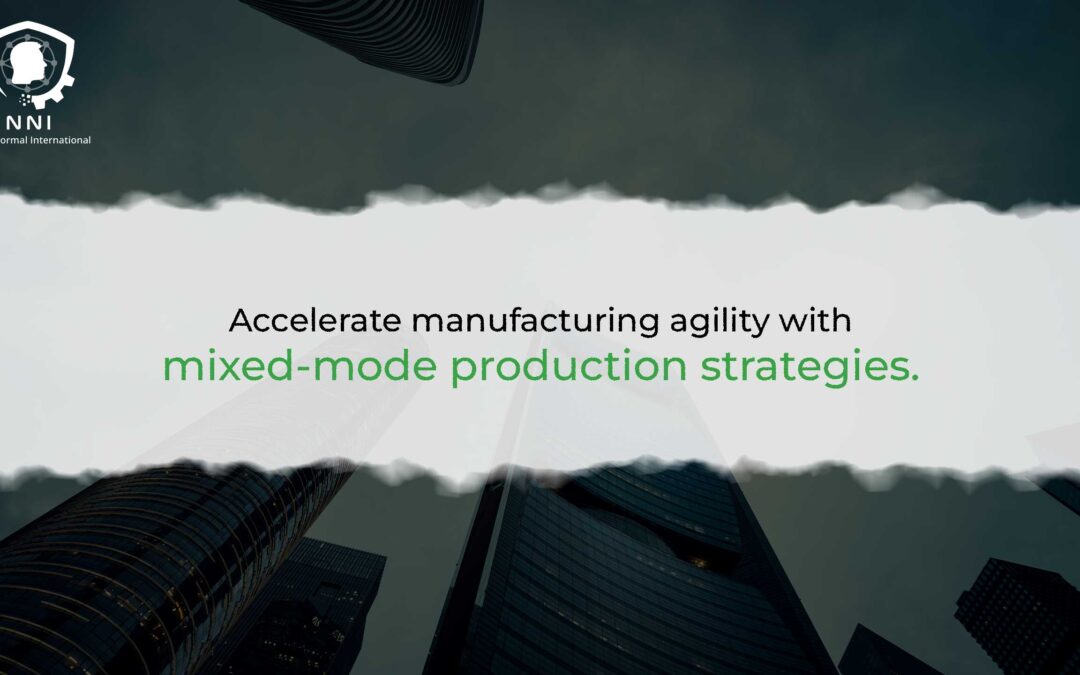Embracing Flexibility in Production for Competitive Advantage
Manufacturing agility has become a pivotal focus for businesses aiming to thrive in a rapidly evolving market. In the quest for business success, executives and managers are increasingly turning towards mixed-mode production strategies to enhance flexibility and responsiveness.
The Imperative of Agile Methodologies in Contemporary Manufacturing
The current economic climate presents an array of challenges and opportunities that compel manufacturing entities to exhibit unprecedented levels of adaptability. This is a time marked by a rapid transformation in consumer behavior, frequent upheavals in global supply chains, and a relentless pace of innovation driving market trends. In this context, agility is not just beneficial but essential for survival and success. The concept of mixed-mode production stands out as a particularly potent strategy in this regard. It involves the integration of diverse manufacturing approaches, including make-to-stock (MTS), where products are produced for inventory based on forecasted demand; make-to-order (MTO), which is driven by specific customer requests; engineer-to-order (ETO), which provides customized solutions tailored to unique customer specifications; and configure-to-order (CTO), allowing customers to select features within a standard framework.
This fusion of methods enables businesses to pivot swiftly and efficiently as circumstances dictate, ensuring a dynamic and responsive manufacturing operation. The strength of mixed-mode production lies in its versatility—it empowers companies to cater to broad market segments while also meeting individualized customer needs with precision. Furthermore, by applying the principles of each production mode where they fit best, organizations can optimize their inventories, reduce waste, and improve delivery times, thereby enhancing customer satisfaction and competitive edge. Ultimately, embracing mixed-mode production is a strategic decision that allows firms to respond with agility to the ever-evolving demands of the global marketplace, positioning them to capitalize on emerging opportunities and to mitigate potential risks effectively.
Generative Artificial Intelligence: A Catalyst for Change Management
Generative Artificial Intelligence (AI) has emerged as a transformative force in enabling mixed-mode production. With its predictive capabilities, AI informs decision-making, forecasts market trends, and optimizes resource allocation. For leadership and management, this technology is a cornerstone in driving efficiency and effective communication within the production chain.
Executive Coaching for Strategic Implementation
Implementing mixed-mode production strategies requires a deep understanding of change management principles. Executive coaching services play a crucial role here, equipping leaders with the necessary skills to navigate the complexities of this transition. Through targeted coaching, managers can learn to harness predictive analytics and generative AI for strategic planning and project management.
Mastering Effective Communication for Strategic Transformation
In the intricate tapestry of organizational change, particularly when navigating the adoption of mixed-mode production strategies, the thread that holds everything together is effective communication. It’s the cornerstone that ensures all facets of the organization move in harmony towards the new strategic direction. Effective communication is not merely about disseminating information; it’s about creating a shared language and understanding that permeates every level of the organization, from the C-suite to the operational staff.
As companies endeavor to integrate diverse production strategies, from make-to-stock to configure-to-order, the success of this integration is contingent upon everyone’s clear understanding of the change. Leaders are tasked with a pivotal role – to articulate not only the ‘what’ and the ‘how’ but also the ‘why’ behind the shifts in production strategy. They must translate the complexities of mixed-mode methodologies into tangible concepts that resonate with their teams, highlighting the benefits and the positive changes that come with this evolution. Doing so can rally the workforce around the new vision, turning the strategic shift from a mandate to a shared mission.
Furthermore, the art of effective communication in the context of mixed-mode production is not a one-off announcement; it is an ongoing dialogue. It involves actively listening to feedback, addressing concerns, and making adjustments as needed. Such a dynamic approach to communication encourages an organizational culture where collaboration and innovation are not just welcomed but become the norm. By prioritizing clear, consistent, and transparent communication, leaders can drive the seamless integration of mixed-mode production strategies, fostering an environment ripe for continuous improvement and competitive advantage.
Conclusion: Paving the Way for Business Success
Mixed-mode production strategies represent a paradigm shift towards more agile manufacturing practices. By embracing these strategies, businesses are setting the stage for unprecedented growth and resilience in the face of change. As we witness a new dawn of manufacturing excellence, those who adapt will lead the path to business success.
#ManufacturingAgility #MixedModeProduction #BusinessSuccess #ChangeManagement #GenerativeAI










